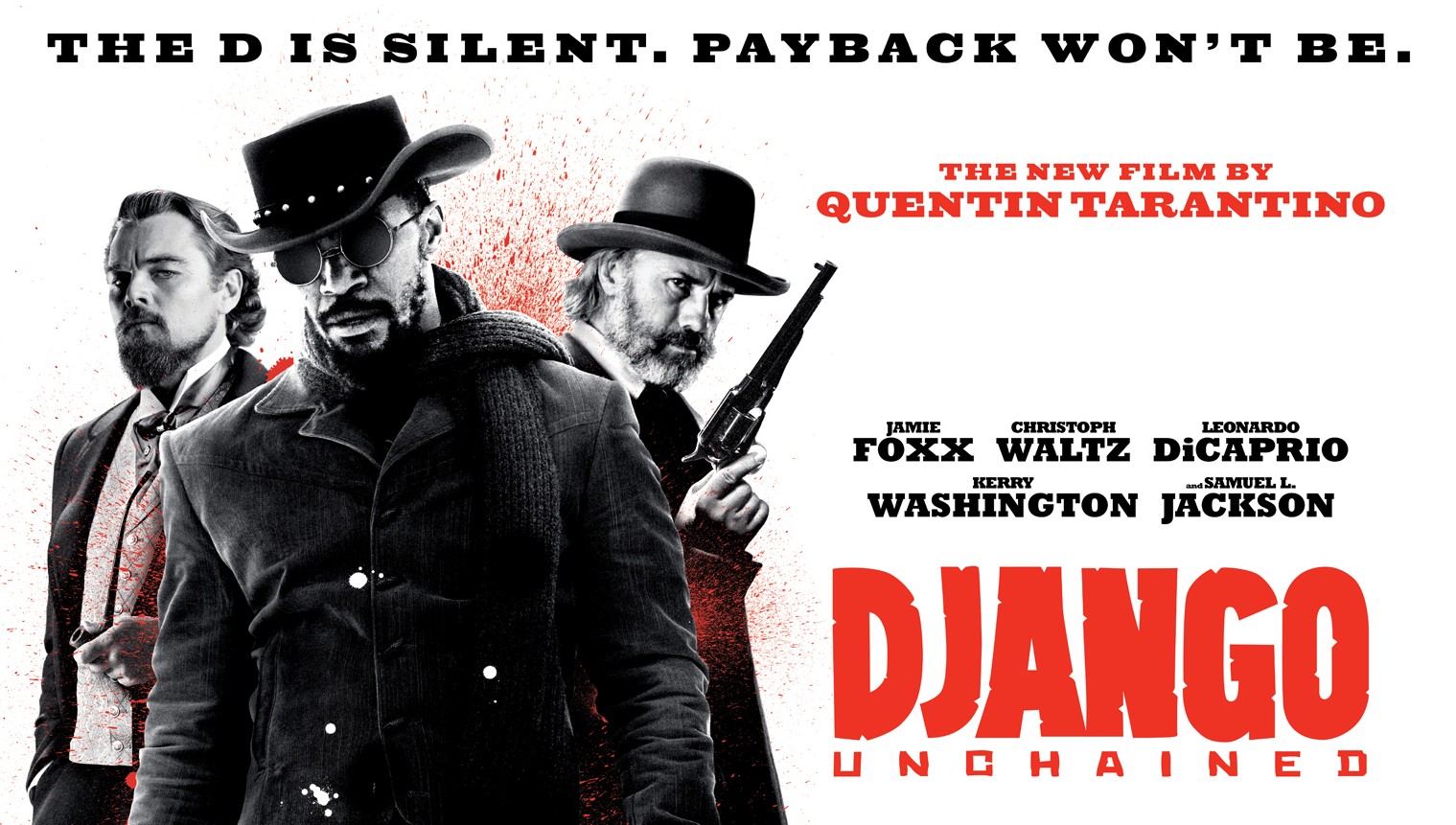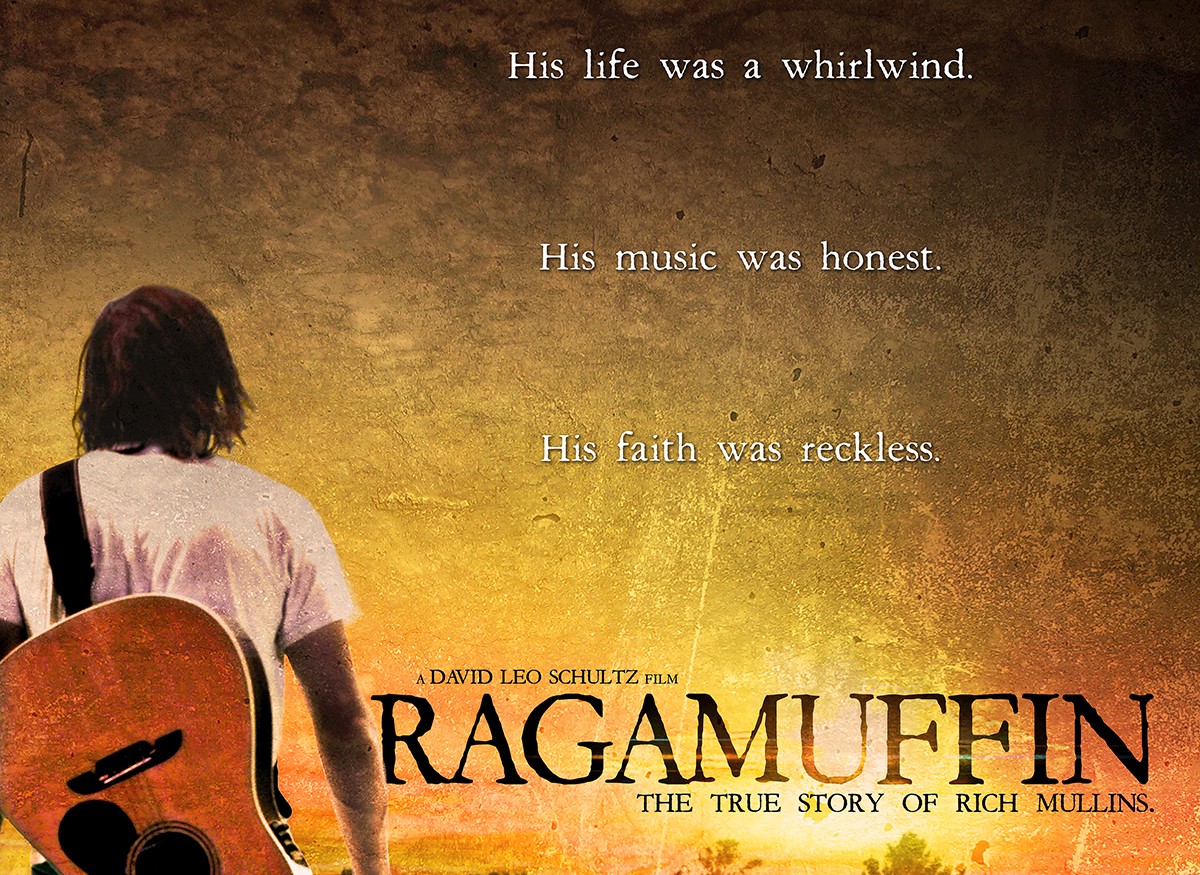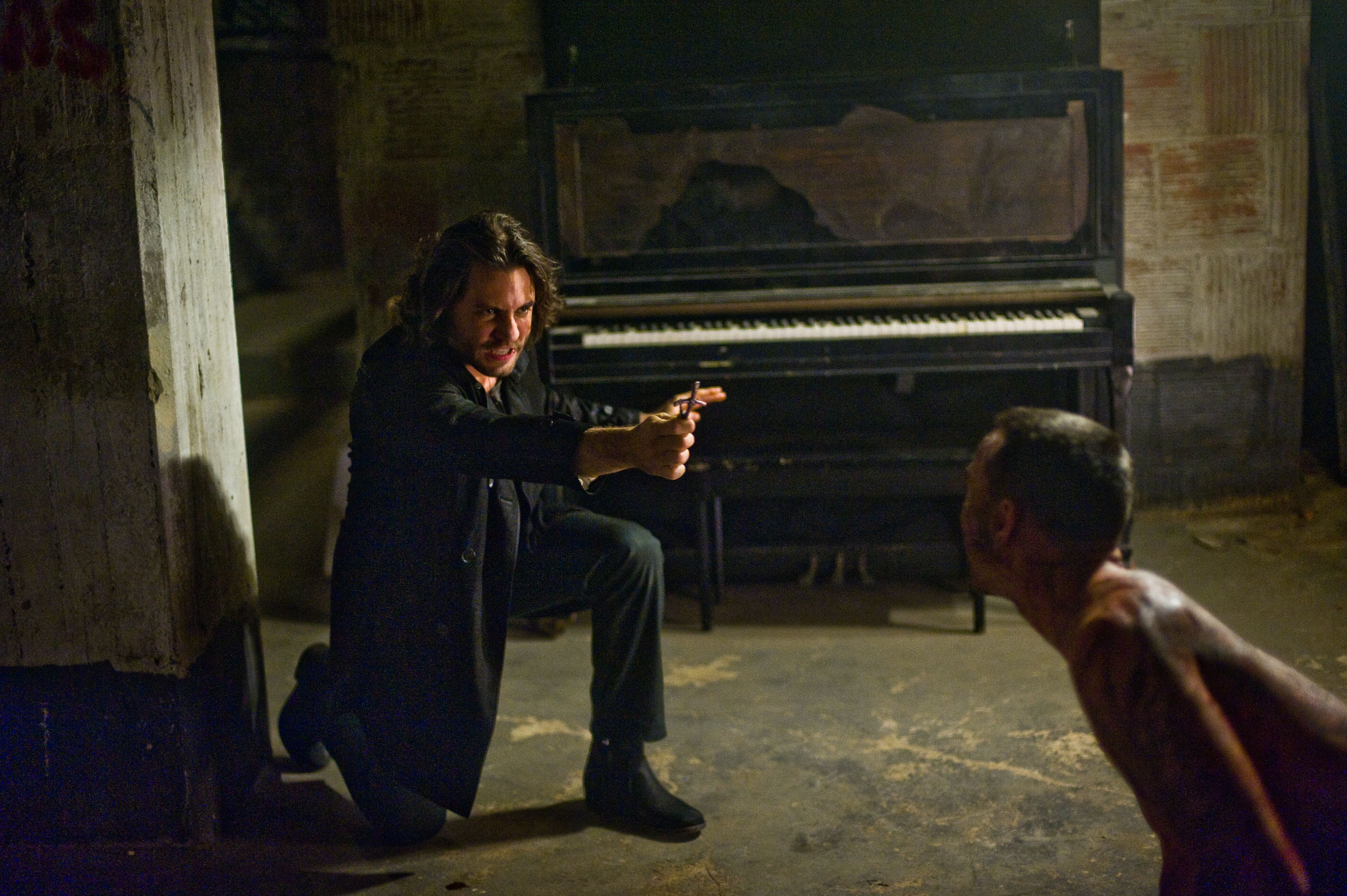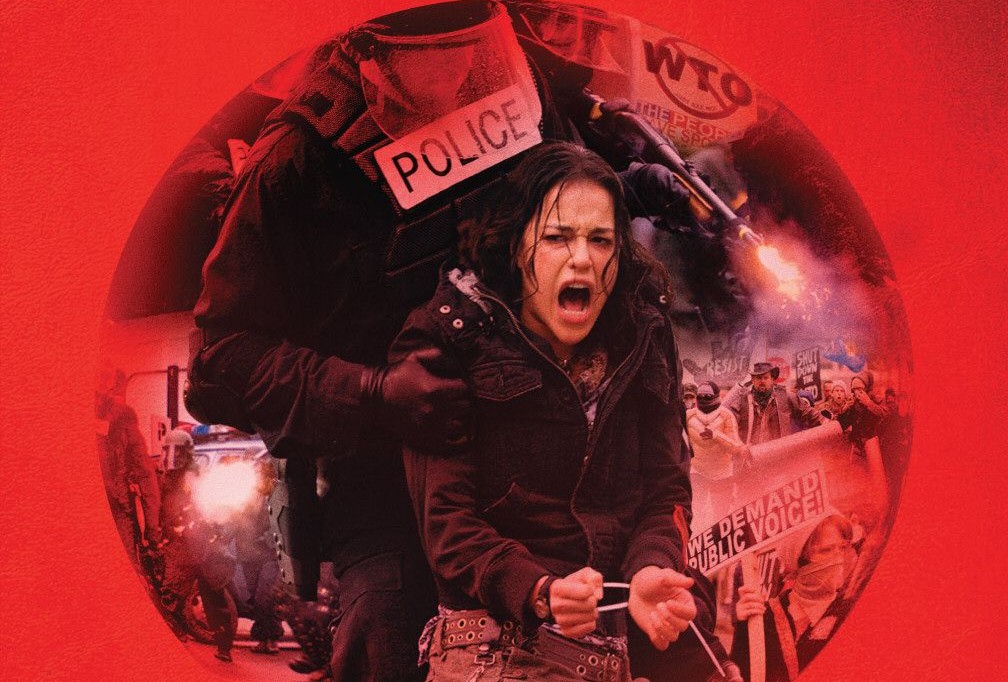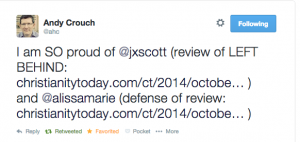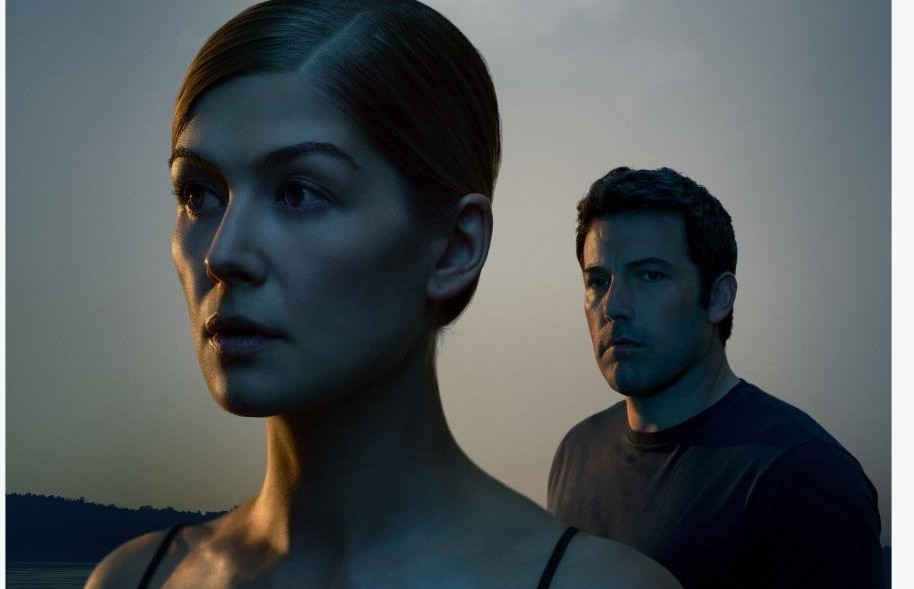Blaze of Gory
Now that Quentin Tarantino's Django Unchained is streaming on Netflix, I figured it was time to republish this article, which was requested by the editors of Christianity Today, and published in the March 2013 print issue under the title "Blaze of Gory" and online as "Django Unchained and the Quest for Revenge."
•
On Christmas Day 2012 — while Americans were still grieving for victims of the Newtown elementary-school massacre — Django Unchained, the new film by Quentin Tarantino, opened nationwide.
For those who don’t know: Django Unchained is set in the 1850s. A slave (played by Jamie Foxx) is set free and trained by a bounty hunter (Christoph Walz) to help him kill bad guys. Eventually, they endeavor to rescue Django’s enslaved wife from a sadistic plantation owner. Extravagant shootouts, sickening carnage, and vigilante justice ensue.
Did the wounded American public boycott the movie and condemn Tarantino for insensitivity?
No, many opened their Christmas presents and then went to the movies. Django Unchained earned more than half a million in the first six days. And Hollywood, being a business-minded town, will get the message: “More of this, please.”
Before we flog Tarantino for his extreme depictions of violence, or condemn Django Unchained, or call for censorship on artists who paint scenes of atrocity and bloody vengeance, consider these questions.
1. Are people really so bloodthirsty?
Stories of vigilante justice and revenge oversimplify the world into good guys and bad guys, and glorify individuals who resolve by force whatever grieves or offends them. They answer violence with violence, ad infinitum.
Such art lacks any vision for peace, reconciliation, or the redemption of enemies.
But it is naïve to convict audiences of mere bloodlust. Many are compelled by an honorable passion, a perception of injustice, a desire to see order restored. When the audience cheers for the rescue of Django’s wife, or for the punishment of a man who castrated slaves, there is genuine conscience at work.
It falls short of a mature respect for love, mercy, and grace, but it’s a step in the right direction.
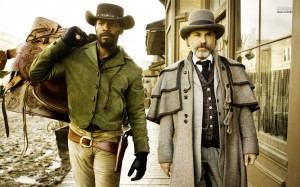 2. If gratuitous violence is harmful, what about dishonesty?
2. If gratuitous violence is harmful, what about dishonesty?
When a culture tells stories that deny or excuse its own evils long enough, the pendulum is sure to swing the other direction, revealing and even exaggerating what has been left out.
Tarantino’s vision of the 1850s is more truthful and less romanticized than most films about the period. He isn’t afraid to acknowledge the murders, cruelty, and racism that should weigh heavily on America’s conscience.
Violence that is easy to watch is potentially more damaging than scenes that make us sick to our stomachs.
3) Don’t the Scriptures tell us to dwell on “whatever is good … whatever is excellent”?
We should be just as quick to acknowledge and honor what is “excellent” and “worthy of praise” in Tarantino’s movies as we are to object to his offenses.
Tarantino’s screenplays are driven by sophisticated, quotable, even somewhat musical dialogue. His engaging characters are often brought to life in exquisite performances. (In Unchained, Christoph Walz, Leonardo DiCaprio, and Samuel L. Jackson are brilliant.)
But if you find his films too troubling, by all means, steer clear. Writing to a church whose members disagreed about how far they could go in consuming pagan culture, Paul counseled, “One man’s faith allows him to eat everything, but another man, whose faith is weak, eats only vegetables. … Let all be fully convinced in their own minds” (Rom. 14:2–5). Elsewhere, he said, “Everything is permissible for me — but not everything is beneficial” (1. Cor. 6:12). Some of us can stomach Tarantino’s work, others can’t. Both can be faithful responses.
4) Are we remembering the violence in the great stories?
Homer, the Brothers Grimm, Shakespeare, Flannery O’Connor, Cormac McCarthy — great storytellers have consistently borne witness to violence.
The Old Testament paints a world in which violence is a method for committing sin and achieving justice. Cain. Moses. Samson. David and Goliath. David and Uriah. God’s armies slaughter men, women, children, and animals. A woman drives a stake through a villain’s head. (Remember Ehud, who cleverly gained access to an evil king and then shoved a dagger so deeply into his guts that “the handle sank in after the blade, and his bowels discharged”? That’s some gory, violent justice right there.)
To a world without Christ, these stories were necessary. To those that love him, they’re a reminder of how much we needed him. To a world that rejects his example of sacrifice and grace, they remain a pleasing fantasy, but insufficient.
The Apostle Paul walked among altars built to false gods and observed how they revealed a culture’s incomplete vision. He did not condemn altars or worshippers, but engaged their longing for the missing piece, the “Unknown God.”
By listening to the conflicted and troubling visions of our own culture, we can answer Christ’s call to love our neighbors. Moreover, we can learn to share, celebrate, write, and even film visions of something better than vengeance, a way that reconciles all of creation and breaks all captives’ chains.
[I explore the subject of big-screen violence and vigilante justice more thoroughly in my "memoir of dangerous moviegoing" — Through a Screen Darkly.]
Ragamuffin (2014) - A Guest Review by Martin Stillion
Please welcome Martin Stillion, my friend of more than two decades — a former classmate, a multi-instrumentalist, an extraordinary editor, an accomplished journalist, a frequent contributor to Response, a devoted family man. I've often appreciated his discernment when it comes to music and movies.
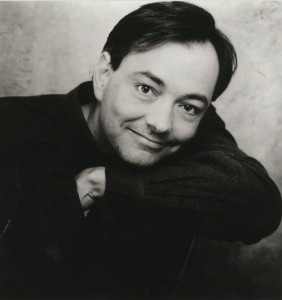 He posted some comments on Ragamuffin, a film that I've been hoping to check out soon, and I asked if I could share them. He responded by expanding them into a guest review. Thanks, Martin!
He posted some comments on Ragamuffin, a film that I've been hoping to check out soon, and I asked if I could share them. He responded by expanding them into a guest review. Thanks, Martin!
•
The last time I saw Amy Grant in concert, back in the mid-’80s, some guy named Rich Mullins was the opening act. I liked him well enough to buy his debut album, then pretty much forgot about him until I went to college—where the other students were excited about a couple of his newer songs: “Screen Door” and “Awesome God.” Both songs struck me as trite and cheesy, and I pretty much wrote off Rich Mullins after that.
Years later, especially around the time Mullins died in 1997, friends would occasionally mention how profound they thought he was. Lacking familiarity with his later albums, I’d just nod and change the subject. But it seemed, from the scant details I did know, that he was capable of far more than cheap crowd-pleasers, and that his work had taken on additional spiritual, artistic and social dimensions since I’d last checked.
This year, along comes a biopic of Mullins, Ragamuffin—which I thought might serve to fill in some of those gaps in my awareness. Released in January, the film is now streaming on Netflix. So I watched it.
I wish I could recommend it.
Ragamuffin should have been an interesting film, but it’s a half hour too long, the acting is mostly subpar and the characters are almost uniformly two-dimensional. For example, two of the most experienced cast members—Wolfgang Bodison (A Few Good Men) and James Kyson (tons of TV credits, notably “Heroes”)—portray shifty record label executives named Matt and Bryan, who might as well have horns growing out of their heads ... and wouldn’t you know it, they’re just about the only ethnic minorities in the film: one African American, one Asian. (In reality, Mullins’ label execs were two white guys, Mike Blanton and Dan Harrell, best known as Amy Grant’s management team, and Mullins was with their label for eight years.) Other characters—Mullins’ distant father (Mel Fair) and careworn mother (Michelle Keller), bandmates, girlfriend, et al.—also function more as cardboard stereotypes than believable humans. Cast members with less developed acting chops are assigned some of the larger supporting roles, and their woodenness tends to kill whatever emotional momentum the film might otherwise have achieved.
Canadian Michael Koch does give what appears to be a somewhat credible performance as Mullins, a talented but troubled artist who’s more concerned with integrity than success. And he captures some of the struggles that such artists faced when trying to make their way in CCM, a musical genre based more on conformity than originality. To its credit, the film makes no attempt to whitewash Mullins: he’s antisocial, he’s codependent, he’s impetuous, he loses his temper, he gets drunk. On the other hand, he’s sincere in his Christian faith and wants to make the world a better place, if only he can put a few of his demons to rest and find his niche.
Unfortunately, writer/director David Schultz (who also appears in the film as Mullins’ Bible college buddy, Sam Howard) is a little too eager to make all the foregoing points, and the film ends up chasing its tail, showing us the same themes over and over, punctuated by the same portentous music, when it really needs to move the story along. Koch’s acting wears thin with all this pointless reiteration. Eventually we do see Mullins meet up with priest/author/speaker Brennan Manning (Charles Lawlor), who becomes his spiritual mentor and guides him toward his big emotional breakthrough—which I’ll get to in a minute.
Every so often we’re reminded just how much of a low-budget film we’re watching. It’s necessary, for example, to depict Amy Grant’s Age to Age LP, which contained Mullins’ first songwriting coup, but somehow it’s not necessary to use any of the correct artwork. At one point Mullins is shown in a cinema watching a film about St. Francis—but rather than license footage from any actual film about St. Francis, Schultz inserts his own film-within-a-film.
Other blunders are, I’m afraid, more serious. Ragamuffin depicts Mullins’ first visit to the Navajo Nation—an experience so profound for him that he enrolled in a college music education program just so he could go back and teach the children he’d met there. Mullins did, in fact, finish his degree and spend the last two years of his life on the reservation ... but for some reason Ragamuffin skips those two years entirely. We see Mullins talking ad nauseam about returning, but inexplicably, we never see him do it. If the real-life Mullins came to any epiphanies through his work as a teacher, Schultz seems uninterested in telling us about them. Instead, as the film would have it, Mullins makes sense of his life by going on a retreat with Manning, where he finally gets past the most clichéd case of daddy issues since The Empire Strikes Back.
All that being said, if the goal of Ragamuffin is to get viewers to reconsider the life and music of Mullins, who’s been dead these seventeen years (which amounts to several eons in the world of popular music), then it’s adequate to that task: I have some of his stuff playing on YouTube right now. If the goal was for the film to be a work of art in itself, then there’s a lot more work to be done. Finally, however, one must give it props for being only the third film I’m aware of in which an actor portrays his own father. (If you can name one of the others, you’re probably more qualified than I am to write this review.)
Deliver Us From Evil (2014)
This year, I've seen two priests on the big screen. Both have marched solemnly toward a showdown with evil.
That evil takes two very different forms — a human being with a gun and a grudge, and a demon using a broken human being as his vessel.
Yes, these two films are altogether different experiences. But both deal cleverly, even subversively, with a variety of genre conventions (one's a scenic, small-town, Masterpiece Mystery-type production; the other is a grim, big-city police procedural). Both present priests who are admirable men who can crumble if their weaknesses are exploited. Both are unusually sincere at heart. And both include far more interesting and complex depictions of faith than the preachy mediocrity that is typically categorized as a “Christian movie.”
I haven't found the time yet to give an in-depth review of Calvary — the whodunit, or rather, the who's-gonna-do-it — but here are some revealing responses from critics I regularly read.
Deliver Us From Evil — which arrives on home video just in time for Halloween — is a police procedural driven by the obsessions of my favorite current scare-master, Scott Derrickson. Tricked out with wild special effects, Deliver Us follows a cop who, skeptical about Satan, teams up with a Catholic priest in order to track a serial killer: a villain whose methods defy rational explanations, and who may not even be human.
Let's take a closer look at that one. I saw Deliver Us From Evil last July, and I've been thinking about ever since.
•
For Steven Spielberg, it’s the slow zoom in a dramatic moment. For Martin Scorsese, it’s the long-take dolly shot. What's horror-master Scott Derrickson's signature shot? It may well become that hold-your-breath moment, as a terrified seeker’s face is illuminated in the very light that he’s shining into the darkness. That image builds suspense by concealing the very things we are straining to discern in the darkness. But there’s a sneakier implication: That the light may indeed be revealing part of the problem — the seeker himself.
It’s oversimplifying matters to say that, in Derrickson’s film, “the real problem is within.” But that idea has come up in his work before: In The Exorcism of Emily Rose, Laura Linney plays a skeptic whose doubt becomes a torment when the evidence suggests supernatural events; and in Sinister, Ethan Hawke plays a novelist searching for understanding about horrific crimes, only to discover that his neglect of family is like bait for the monster. These aren't simple stories of good guys hunting bad guys. They're about people who won't overcome evil unless they discover the insufficiency of their power, the weakness in their faith.
In Deliver Us From Evil, Derrickon’s most ambitious project, Eric Bana plays Officer Sarchie, a cop with a weakness and a strength. His righteous anger can get the better of him (Bana has plenty of experience “Hulking out"). But he also has a sixth sense for, well, sinister activity — think Peter Parker whose “spider-sense” tingles when criminals are up to something.
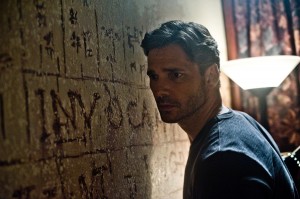 On this particular manhunt, the killer seems capable of things that Sarchie's worldview cannot explain. (Sarchie the character — loosely based on the film's inspiration, a real cop-turned-exorcist who wrote Deliver Us From Evil as a memoir, not a novel — is a lapsed Catholic, determined to explain away things that go “bump” in the basements of the terrified callers who ask for his help. But as this case leads him down into creepy cellars, his confidence dissolves in the glow of his own flashlight. Something wicked this way comes — has already arrived.
On this particular manhunt, the killer seems capable of things that Sarchie's worldview cannot explain. (Sarchie the character — loosely based on the film's inspiration, a real cop-turned-exorcist who wrote Deliver Us From Evil as a memoir, not a novel — is a lapsed Catholic, determined to explain away things that go “bump” in the basements of the terrified callers who ask for his help. But as this case leads him down into creepy cellars, his confidence dissolves in the glow of his own flashlight. Something wicked this way comes — has already arrived.
Bana's leading-man status is the first of several remarkable things about Deliver Us From Evil. It’s been nine years since Spielberg’s Munich, where Bana played the Israeli avenger who learns that responding to evil with violence can hollow out a heart. It’s been ten years since he was cast as the conscience-burdened Greek hero Hector, dueling Brad Pitt’s Achilles in Troy. But his full commitment to this performance proves here that he’s still a fine choice to play a movie’s Muscular Conscience.
Sarchie he comes equipped with the genre accessories: an amusing sidekick (Joel McHale, all smirk); a beautiful — and thus vulnerable — wife (Olivia Munn); and a cute-as-a-button daughter who may as well wear a shirt that says “Hey Evil Spirits, Please Come Haunt My Bedroom” on the front, and “Hey, Villains — Keep Me In Mind For This Movie’s Final Act” on the back. What sets good genre-film directors apart from bad ones? It isn’t their avoidance of convention, but whether or not they find a way to suspend our disbelief and surprise us even when we know the formula. Great genre-film directors find ways to do something truly imaginative within those routines, or alter them in some powerful way.
Here, Derrickson does both. He keeps us leaning forward in hopes of naming and catching the killer, but he’s also pulling a bait-and-switch. It’s a police procedural cake pan, but he’s filling it with horror-genre cake batter. So the result isn’t much like anything we’ve seen before.
Derrickson, his co-writer Paul Harris Boardman, cinematographer Scott Kevan, and a chillingly effective team of sound designers, mix up the ingredients; his actors — Bana, McHale, Munn, and the extraordinarily charismatic and confident Edgar Ramirez doing his first big genre pic — sell the results. They're better than the genre requires. But Derrickson’s secret weapon here is one we rarely see in horror: This film is “Inspired by Actual Events.” That’s a claim likely to set film critics to scoffing. Come on, really? Demon possession? Crosses? Chants? Holy water, and all that?
But look into it, folks — Ralph Sarchie is for real, and his on-the-record stories are unsettling.
You may not believe in this stuff, but much of the world does, and it'd be tough to write off as mere fiction the testimonies of exorcism that defy rational explanation, and the cultural traditions around the world that accept the existence of demons. The Italian family whose haunted home is investigated by Sarchie — that's not make believe. In an online discussion, Derrickson said, "I saw the video recordings that the real Ralph Sarchie made with the family members that the scene was based on. Those people weren't lying, weren't trying to get attention, and were absolutely terrified of their own house. Chilling to watch."
I'm of the opinion that this stuff goes on scaring us because there is some truth to it. Whether we're watching a B-movie like Paranormal Activity or an art film like No Country for Old Men, we are troubled because there is something about the suggestion that Other Powers are at work in the world... something that we sense to be true, even if it slips past the use of scientific instruments. And the fact that such testimonies persist — across generations, cultures, and geographic boundaries, while maintaining the same basic details — should give anybody pause before shrugging the spookiness off as “psychological disturbance” or coincidence. "There are more things in heaven and earth, Horatio, than are dreamt of in your philosophy," Shakespeare's Hamlet insists, and I believe that. But some religious traditions endure because they have given us a vocabulary about such things that rings true.
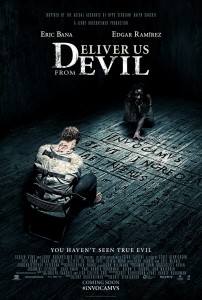 Sarchie — the character, not the real guy — wants to shrug off the suggestion of demonic powers, but the deeper he descends into some overlapping mysteries, the more he sees things that he wishes he could un-see. This isn’t an idiot-factor horror movie, in which stupid people get what’s coming to them, or a monster lurks just waiting for somebody to stumble into his clutches. Derrickson already fulfilled that formula with Sinister — masterfully, in my opinion. Here, he’s aiming higher. He wants to bring a stereotypical American hero — a muscular cop, a family man, and a pretty rational guy — face to face with the devil, or pretty close. He wants to show us that our heroes aren’t strong enough (or smart enough) to take on the real enemy, not without expanding their worldview and learning where the real power to overcome evil comes from. It’s Obi-Wan Kenobi arguing with Han Solo about the Force all over again. Sarchie insists that he's seen "nothing that can't be explained by human nature." Mendoza replies, "Then you haven't seen true evil."
Sarchie — the character, not the real guy — wants to shrug off the suggestion of demonic powers, but the deeper he descends into some overlapping mysteries, the more he sees things that he wishes he could un-see. This isn’t an idiot-factor horror movie, in which stupid people get what’s coming to them, or a monster lurks just waiting for somebody to stumble into his clutches. Derrickson already fulfilled that formula with Sinister — masterfully, in my opinion. Here, he’s aiming higher. He wants to bring a stereotypical American hero — a muscular cop, a family man, and a pretty rational guy — face to face with the devil, or pretty close. He wants to show us that our heroes aren’t strong enough (or smart enough) to take on the real enemy, not without expanding their worldview and learning where the real power to overcome evil comes from. It’s Obi-Wan Kenobi arguing with Han Solo about the Force all over again. Sarchie insists that he's seen "nothing that can't be explained by human nature." Mendoza replies, "Then you haven't seen true evil."
Thus, Sarchie’s a skeptical Scully to the enlightened Mulder of Father Mendoza, a “plainclothes priest” who specializes in demonology and exorcism. Mendoza believes. He’s seen enough to know, and his faith fills in the rest. Sarchie’s seen enough to know too, but he actively resists the faith that would complete the picture — he knows that he cannot embrace the truth without it costing him, without it changing his head, his heart, and his choices.
As Sheriff Bell said in No Country for Old Men: "The crime you see now, it's hard to even take its measure. It's not that I'm afraid of it. I always knew you had to be willing to die to even do this job. But, I don't want to push my chips forward and go out and meet something I don't understand. A man would have to put his soul at hazard."
Just as Mendoza is, for this moviegoer, the film’s strongest character, so Édgar Ramirez is the actor who steals the show. He’s quiet, simmering, and introverted, which makes audiences lean forward. And he’s given a rich backstory — in part because Ramirez thought the character in the original screenplay needed work, so he inspired a rewrite by doing his own research on a Jesuit priest from Latin America.
As Sarchie, Bana is earnest and aggressive, seemingly the kind of cop hero that audiences love — which makes it all the more interesting that he never really takes control of the narrative, but remains a cipher, a guide whose doubts most people will understand.
That's Derrickson's twist: As in Raiders of the Lost Ark, the hero's job is to realize that he's not going to be the hero this time around. He cannot win this battle. His job is to (forgive me) "let go and let God." Prayers are not magic spells but appeals for someone else to engage, to fight in our place. Best to invite the Almighty into the confrontation.
And how does God fight? By presenting himself as love, willing to suffer any evil we throw at him, willing to die for us. He shows us that true deliverance lies not in returning evil for evil, violence with violence, cruelty with cruelty, but in overcoming evil with good (see footnote*).
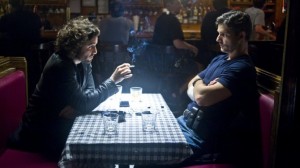 Thus, when these two — the man of faith and the man of skepticism — sit down like Pacino and De Niro in Michael Mann’s Heat, we feel that we’ve finally arrived at the film’s reason for being. It’s too bad, then, that this scene flies by, and that their conversation barely scratches the surface of their subject.
Thus, when these two — the man of faith and the man of skepticism — sit down like Pacino and De Niro in Michael Mann’s Heat, we feel that we’ve finally arrived at the film’s reason for being. It’s too bad, then, that this scene flies by, and that their conversation barely scratches the surface of their subject.
Similarly, while Bana and Munn make a good-looking couple, the scenes between them were too slight to make me really feel the tension when the inevitable tests come.
Still, as Sarchie and Mendoza close in on the responsible party, Derrickson keeps things strange by keeping them true — drawing on the details of eyewitness accounts and recordings of exorcisms. Yeah, the big showdown with demons will come, which makes for sensational big screen spectacle; but Derrickson makes sure that nobody leaves the theatre feeling completely satisfied. Demons don’t get locked away like crooks, and you can’t shoot them. The movie provides steps forward for its characters, and this particular demon hunt reaches a blistering, explosive conclusion. But moviegoers will feel that they’ve just seen an origin story — an episode in which a cop finds new vision and confidence, and a partnership worth following is formed.
Would it be too much to ask for a sequel? The devils, they’re still out there. And Mendoza has so much more to teach Sarchie.
Did you “like” the movie? Your answer will have a lot to do with what you believe. If you believe that “possession” is something different than a psychological disorder, this film may have the ring of truth. But if you think science can explain every mystery we encounter, and that spiritual warfare is just some dark-age delusion, this won’t feel like much more than a trip through a hokey house of horrors.
Me, I don’t think questions about spiritual forces get enough airtime at the movies. As someone who has come a little too close for comfort to a couple of circumstances like this, and who has close friends who express regret that they ever encountered such stuff first-hand, I don't attend to stories like this the way I attend to, say, superhero movies. What Derrickson's spotlighting is not just a bunch of "genre cliches." Most of the time, entertainers treat demons as merely mythological, exploiting them for cheap thrills. Derrickson has enough respect for common, consistent testimonies — and enough faith in humankind’s ongoing experience of mystery — to take things much more seriously. By adhering to the details of actual testimonies, he provokes audiences to wrestle with the implications of those testimonies... that certain horrors cannot be just labeled and shelved as mental conditions or temporary psychosis.
This is, in some senses, a genre film, and thus certain familiar tropes are in play. But it's a formula movie well-played, and one that layers formula upon formula into an intriguing hybrid. It’s built to entertain. But this is also a Scott Derrickson film. It’s going to give you more than you bargained for. It might keep you up at night with troubling questions about evil committed by humankind and, yes, evils done by something else. Derrickson shouldn't have been able to "deliver" something that works both as a late-Friday-night popcorn scare fest and as a provocation to ask ourselves what we make of the prevalence of testimonies — across generations and cultures — regarding spiritual warfare of this nature. But that's what he did.
No, not everything works. Olivia Munn should've been given something more than the usual concerned-mom/"What about us?" cop's wife, because she made an impression with what little she had to do. I didn't get enough from McHale's character for his big scene to pack the necessary punch. And the end-credits montage, going to extremes to disturb and distress, ends up merely trying our patience. This material called for something a little more subtle and, dare I say it? Sacred.
But the cast is strong, the sound design is fantastic, and everything looks great. As the craft of horror goes, it's a scream; and as a game of "Catch the Homage" or Use Your Allusions," it's a hoot and a half. (Blade Runner fans — watch for the clever Roy Batty reference at the end.)
And for the record, Mr. Derrickson, sir, if you're listening: I would follow a whole franchise of Édgar Ramírez as The Specialist.
•
* This is a bit of a tangent, but it's one I find compelling, so bear with me. The climactic confrontation in Deliver Us From Evil is profoundly Christian because it becomes a clash not of one violent force against another, but a meeting of the enemy's violence with God's willingness to suffer for the sake of love.
Many Christians get very excited about the idea of "The Battle of Armageddon," a sort of epic-fantasy battle in which the armies of God and the armies of Satan clash at the end of the world. But what's remarkable about the Scriptures upon which such fantasies are based is this: Revelation describes the enemies of God gathering at a place called Megiddo. But the battle never actually occurs. All that happens is this: God says from heaven, "It is done," an echo of what Jesus said on the cross when he overcame by entering into death and overcoming its power. When those words are spoken, that is that. All resistance to God implodes, for the Great Liars have their strongest weapon — death — proven to be powerless against God's immeasurable love. Thus, apocalyptic stories that show the Powers of Good overcoming Evil with a sort of coercive violence miss the whole point. It is God's willingness to accept ultimate the ultimate suffering of our hatred, rejection, and violence — as an expression of his immeasurable love for us — that is (and has always been) the invincible, overcoming force in the universe. It is finished, indeed.
•
BONUS: Here's Scott Derrickson giving nothing short of an epic interview to Steven Greydanus.
http://www.youtube.com/watch?v=hf-mrSgR69I
•
If you appreciate this post and enjoy Jeffrey's work exploring the territory where art, faith, and culture intersect, you're invited to "Put Your Name in the Credits." Cast your vote for "Keep Looking Closer Alive." Make a donation. Offer whatever you feel moved to contribute. All donations will be applied directly to that materials, events, and experiences that make the blog happen. That's a Looking Closer promise.
Battle in Seattle (2007)
Many thanks to Matthew Kaemingk of Christ and Cascadia, who invited me to write on the subject of the spirit of protest in the Pacific Northwest, and about a movie directed by the man who was almost Aragorn.
Do you remember Battle in Seattle?
Don’t worry. It made no lasting mark at the 2007 box office, and reviews were (deservedly) mixed.
I’ve finally seen it — seven years later, two months from the fifteenth anniversary of Seattle’s historic WTO protests. And (surprise!) it held my attention throughout.
It was a timely viewing choice, here in this season of protests.
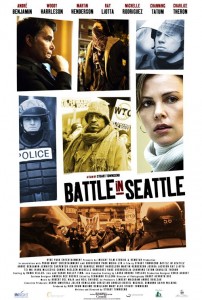 While late-summer wildfires darkened my Eastern Washington horizon last month, another blaze scarred my social networks: “#Ferguson,” “#MikeBrown,” “#HandsUpDontShoot.” Links! Lectures! Laments! It seems everyone is upset about what happened when an unarmed black man in Missouri, hands reportedly raised, was repeatedly shot by a white cop before astonished witnesses. Scanning the outrage on Facebook was like listening to the shrill squeak of Sharpies on picket-sign cardboard.
While late-summer wildfires darkened my Eastern Washington horizon last month, another blaze scarred my social networks: “#Ferguson,” “#MikeBrown,” “#HandsUpDontShoot.” Links! Lectures! Laments! It seems everyone is upset about what happened when an unarmed black man in Missouri, hands reportedly raised, was repeatedly shot by a white cop before astonished witnesses. Scanning the outrage on Facebook was like listening to the shrill squeak of Sharpies on picket-sign cardboard.
And I had to ask myself: Why am I not tweeting my outrage? Have I been pummeled numb by scandal, injustice, and atrocity? Have I become hard-hearted?
I've reasoned my way to some answers... and that has led to more questions. Read "Revisiting “Battle in Seattle”: A Personal Reflection on the Pros and Cons of Protest."
Here's how it begins:
Do you remember Battle in Seattle?
Don’t worry. It made no lasting mark at the 2007 box office, and reviews were (deservedly) mixed.
I’ve finally seen it — seven years later, two months from the fifteenth anniversary of Seattle’s historic WTO protests. And (surprise!) it held my attention throughout.
It was a timely viewing choice, here in this season of protests.
While late-summer wildfires darkened my Eastern Washington horizon last month, another blaze scarred my social networks: “#Ferguson,” “#MikeBrown,” “#HandsUpDontShoot.” Links! Lectures! Laments! It seems everyone is upset about what happened when an unarmed black man in Missouri, hands reportedly raised, was repeatedly shot by a white cop before astonished witnesses. Scanning the outrage on Facebook was like listening to the shrill squeak of Sharpies on picket-sign cardboard.
Why am I not tweeting my outrage? Have I been pummeled numb by scandal, injustice, and atrocity? Have I become hard-hearted?
And I had to ask myself: Why am I not tweeting my outrage? Have I been pummeled numb by scandal, injustice, and atrocity? Have I become hard-hearted?
Calvary (2014): A Looking Closer Film Forum
At Christianity Today, Alissa Wilkinson got my attention early by saying,
Well, I've just come from a screening of Calvary, the most "Christian" film I've seen in as long as I can remember. I don't think it will be winning any awards from the Christian world (although I guarantee it will show up on my end-of-year list here at Christianity Today, and a few others, too). It has bad words, and it takes place in a universe very like ours — that is, in one where people are suffering the ugly aftereffects (and sometime during-effects) of their very serious sins against one another.
I love that. "I don't think it will be winning any awards from the Christian world. ... It takes place in a universe very like ours."
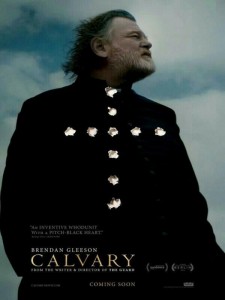 Then I saw it and enjoyed most of it very much, until...
Then I saw it and enjoyed most of it very much, until...
...the end, when admiration grew into deep gratitude. The more I reflect on it, the more I'm certain that this will remain one of my favorite films of 2014.
John Michael McDonagh's movie has its weaknesses — primarily in its resemblance to UK comedies about country communities full of colorful characters; you know, shows like Ballykissangel, in which characters who reveal more than one character trait are the complicated ones).
But the movie's strengths are remarkable and, in the case of its lead actor, formidable. I have a feeling that its reputation will grow, and that critics' respect for it will deepen over time.
I meant to write you a review. I knew it would take a lot of time and attention. And... well, I haven't found the time and attention that the film deserves. So instead, for now, I'm going to share the reviews and commentaries that resonated with me (with thanks to J.A.A. Purves, who shared some of these links at ArtsandFaith.com).
Let's start with a review at The Curator, where my friend Joe Kickasola writes,
Calvary stands as one of those steady, respectable films Christians point to as good storytelling with a thoughtful spiritual telos. “Finally… a film somewhat sympathetic to the faith and not utterly embarrassing,” they might say. Such films — far too few of them — are usually carried by a stellar leading actor, and the rest of the film’s elements (the formal and technical dimensions) stand as modest complements to the lead performance. The budgets are modest, the artistry serviceable (less than brilliant and occasionally flawed), and the director is smart enough to lay low, leaving the central performance and script to shine unencumbered. Robert Duvall’s The Apostle is one example.
Calvary is another. There is nothing particularly remarkable about the artistry of the film, but one must respect that as humble and wise restraint in the wake of Brendan Gleeson. It’s his film, his cross to carry, and he does so, admirably.
In an article at Reel Spirituality about big screen priests, Gareth Higgins writes,
I may have never seen clerical life portrayed in cinema with such a sense of realistic nuance as that found in the writer-director John Michael McDonagh's Calvary, for my money the film of the year, in which Brendan Gleeson’s Father James stands rock steady and open – he’s enormous and strong, microscopically interested and tender, a believer and a doubter, a Santa Claus with a salty mouth, as if Mt Rushmore had a sense of humor or the Grand Canyon could weep.
At First Things, Lauren Ely asks,
Is it possible for a film to capture the horror of the sexual abuse scandal in the Catholic Church while at the same time presenting a case for the necessity of the institutional priesthood? Against all odds, this is exactly what Irish director John Michael McDonagh’s Calvary manages to do.
...
[Calvary is] a surprisingly complex, if imperfectly executed, meditation on the nature of sin and mercy, set in the epicenter of the sexual abuse scandal.
Responding to that review at The National Catholic Register, Steven Greydanus writes:
An essay at First Things went so far as to suggest that Calvary made “a case for the necessity of the institutional priesthood.” That’s probably going too far, but certainly the film proposes that a religious vocation lived with integrity offers not only a viable path for a life well lived, but one that can be of genuine service to others if they are open to it.
Justin Chang at Variety says:
Amid all the accumulated waste and despair, two scenes stand out for their extraordinary tenderness: a beachside reckoning between the priest and his troubled daughter (a superb Kelly Reilly), and a thoughtful conversation with a woman (Marie-Josee Croze) who has lost her husband but not her faith. Hope, it seems, has not been completely extinguished. And yet, as it follows the priest on the lonely walk to his own personal Golgotha (the seven days of his journey conjuring any number of biblical allusions), “Calvary” makes clear, with utter conviction, that the Church’s incalculable abuses have exacted and will continue to exact a terrible human price ...
Jonathan Romney at Sight and Sound:
The film’s claim to moral and philosophical substance rests partly on the formidable shoulders of Brendan Gleeson, whose muscularity as an actor makes him more than credible as a man wrestling with the dark forces of human fallibility
In Financial Review, John McDonald writes:
... McDonagh’s style has both confused and delighted audiences, but it’s clear that we shouldn’t view Calvary as a work of gritty realism. The characters are all grotesques, more reminiscent of an episode of Father Ted than a play by Synge or O’Casey. Every conversation strains towards profundity, then turns and deflates its own pretensions. The story is peppered with literary and cinematic references, but can be enjoyed as the blackest of comedies, a mystery story, a morality tale, or a pseudo-western with more than a hint of High Noon ... McDonagh has cited Robert Bresson’s Diary of a Country Priest (1951) as an inspiration, and the script even includes a sly mention of Georges Bernanos who wrote the novel on which that film was based. Another movie that springs to mind is Luis Buñuel’s The Nazarene (1959), which tells the story of a saintly priest whose good deeds lead him into one disaster after another. The episodic structure of Calvary is notably Buñuelesque, but where the Spanish director frames his story (as usual) as a critique of the Catholic Church, McDonagh leaves open the possibility of redemption. Father James, who is by no means a saint, believes that every member of his exasperating flock can be reformed. He takes the sins of the entire Church upon his own shoulders, being prepared to suffer on behalf of the paedophiles and hypocrites who have brought the institution into disrepute. The townfolk are not simply pathological misfits, but living expressions of a malaise that finds its roots in the deceitful behaviour of the Church, and the apocalypse of the Irish bubble economy. It’s a heavy burden for a lone priest with martyrdom on his mind ...
At Urban Cinefile, here's Louise Keller:
... Plaiting strands of drama with gentle black humour, McDonagh has created a solid platform for the superlative Gleeson whose soulful, grounded presence is a compelling guide for a rich insight into the small coastal village inhabitants' sins and virtues. Like the pull of a quicksand, the deeper we tread, the more we are sucked in; this is a complete work that beautifully showcases life's contradictions and complexities.
And finally... Josh Larsen at Larsen on Film:
Calvary is at its best, to my mind, when it eases up on the quirky supporting characters and grapples with Father James’ religious crisis head on. Should he expose the parishioner who threatened him? (Although the audience doesn’t know the man’s identity, Father James recognizes his voice.) Should he offer himself up as a sacrifice, as an acknowledgment of the sins of the church? Should he give up on the priesthood altogether? With Gleeson doing the wrestling over such rending questions, Calvary has all the character it needs.
Well-Made Movies Won't Be... Left Behind
Today, Matt Zoller Seitz, editor of RogerEbert.com, defended The Good Lie, a movie in which the central characters are Christians, as "a good movie."
Why did he feel the need to defend it? Well, the success of The Blind Side inspired some backlash — opposition to movies in which "a white lady comes to the rescue" of those in need, as if down-home American white folks are the world's saviors. And the marketing campaign for The Good Lie certainly makes the movie look like one of those.
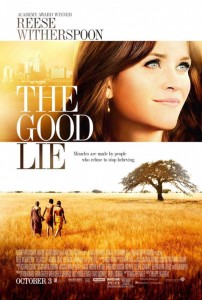 He's not alone in sticking up for the movie. Over at Rotten Tomatoes, film critics are (at this writing) rewarding that film with many favorable reviews: It's up to an 85% positive rating.
He's not alone in sticking up for the movie. Over at Rotten Tomatoes, film critics are (at this writing) rewarding that film with many favorable reviews: It's up to an 85% positive rating.
Why am I telling you this? I haven't even seen the movie.
Well, I'm glad to see these positive reviews because they are very timely. The folks promoting the new "Christian movie" called Left Behind are working hard to demonize those who criticize their movie, saying that film critics are just prone to "persecuting" Christians, and that their reviews are about prejudice instead of discernment. The good reviews for The Good Lie, in which the central Sudanese characters are Christians, call such a claim into question.
It happens again and again.
Decent filmmaking earns supporters across worldviews... even if the film features Christian characters prominently. Even if the film blatantly engages Christian theology. Even if it's made by artists who are Christians.
That complicates the Left Behind supporters's argument. Some of the fans posting on Left Behind's official Facebook page have even gone so far as to announce that critics who find fault with the film will be... you guessed it... Left Behind.
On the official Left Behind Facebook page, the film's promoters actually published these words...
You get that?
"The only critics that matter — our fans — have spoken."
Does anybody really believe that?
Brace yourself — here are a bunch of questions raised by that claim:
- Is it possible to be a follower of Christ and still have some reservations about the craftsmanship of a so-called "Christian movie"?
- Is it possible that critics of the film might be motivated by concerns about artistry rather than a hatred for Christians?
- Shouldn't artists care about what critics of their work might have to teach them? Or should we only listen to "yes-men"?
Here are some more:
- Is Fandango, a ticket-selling service, a trustworthy source of critical discernment about films?
- If fans of the movie have been rallied to vote for the film, while those who don't like the film haven't been urged to do so, and there has been no oversight to make sure that those numbers represent a fair sampling of the public, are those numbers a fair assessment of the film's quality?
- Are the raves of fans who have just exited a movie theater as useful to us as the reflections of critics who have studied the film, held it up to the standards of the art, and done the hard work of interpretation and critical assessment?
- Don't the scriptures exhort us to "test all things" and to "dwell on" "whatever is excellent or worthy of praise"?
- Don't they include proverbs about how wise men will heed instruction?
If I am to understand the Left Behind promoters' marketing and missives, what matters is this: If you do something in the name of Christ, it is apparently automatically excellent, even if those who have devoted their lives to the study of the discipline call the quality of your work into question.
I disagree.
Christians should seek to test their work against the highest standards of any medium. They should welcome constructive criticism, because we serve a God who creates with a standard above all standards.
And don't you suspect that if those same critics — the ones that the Left Behind team had scorned — would have complimented the movie, that those compliments would be plastered all over the Left Behind posters and promotions? Suddenly, those critics would be recognized as having credibility.
Christianity Today's film critic Jackson Cuidon gave Left Behind a rating of 1/2 of a star. And then the reviewer admitted that he gave it that 1/2 a star because the system doesn't accept a 0-star rating. He then wrote in great detail about why. Rather than engaging Cuidon's argument with thoughtful responses or respectful debate, Left Behind producer Paul Lalonde said this:
Wrong again, Mr. Lalonde.
Jackson Cuidon wasn't a "guest blogger."
Almost all of Christianity Today's film critics — including Jackson Cuidon who wrote the Left Behind review, and including the chief film critic who edits CT's film and television coverage — are freelancers. Many of its writers across all subjects are freelancers. During the decade that I was a monthly, even weekly, contributor to CT's movie coverage, I was never an employee of CT, nor was I a "guest blogger." I was a freelancer. (And nobody merely "let me" write things; they paid me to write things.) All of these folks have been chosen and approved by Christianity Today's editors.
And those other movies that Lalonde mentions as being "trashed" by a "guest blogger"? Those titles have also been widely panned by film critics — Christian or otherwise — primarily in terms of filmmaking craft, not for the theology at the heart of them. Those films have a lot of vocal defenders, but those defenders are, generally, talking about theology, not filmmaking excellence. You can have rock-solid theology and still express it in a terrible movie. I'm quite sure that CT's Jackson Cuidon is aware of other films based on Christian theology that he would not trash — films he might even highly praise. Most critics could name some.
By the way, if Christianity Today isn't responsible for that review — if it was just the work of some rogue "guest blogger" — why did Alissa Wilkinson, chief film critic for Christianity Today, post this follow-up article defending the review?
And why did Andy Crouch, executive editor of Christianity Today, endorse the review and praise both Jackson Cuidon and Alissa Wilkinson on Twitter?
When the Left Behind producers and fans start implying that those who criticize the movie are anti-Christian... well, that flies in the face of clear evidence. The Good Lie, starring Reece Witherspoon, is only the latest example. Look at Of Gods and Men, which earned Oscar attention and earned a 93%... 93%!... positive rating at Rotten Tomatoes.
 Look at the film called Calvary which is still playing in some theaters: It's received Oscar buzz for Brendan Gleeson's leading performance as a devout follower of Christ whose life is a brilliant picture of the gospel. The movie has been widely praised, and I expect it will show up on a lot of top ten lists at the end of the year.
Look at the film called Calvary which is still playing in some theaters: It's received Oscar buzz for Brendan Gleeson's leading performance as a devout follower of Christ whose life is a brilliant picture of the gospel. The movie has been widely praised, and I expect it will show up on a lot of top ten lists at the end of the year.
I, personally, loved it.
On television, Rectify is one of the most acclaimed series currently running. (Read this and this.) It portrays Christian characters with deep sympathy, and Scott Teems, one of the chief writers, is a Christian.
Look at the films of Terrence Malick — like The New World, which consistently present perspectives that blatantly and deeply represent Christian faith. That earned a nomination for Best Picture, and Roger Ebert named it among his top ten favorite films of all time.
They're among my all-time favorites as well.
Look at the films of Scott Derrickson, which have earned high praise in the horror genre, but which affirm Christian beliefs and focus on the reality of spiritual warfare and the overwhelming power of Christ. I'm a big fan of Sinister and I admired both The Exorcism of Emily Rose and Deliver Us From Evil.
Look at the favorable reviews for films based on the work of C.S. Lewis, J.R.R. Tolkien, and other great Christian artists.
Martin Scorsese is making a film called Silence, a profound novel about Christian missionaries, written by a Christian. Do you expect critics will almost unanimously pan that because of an anti-Christian bias? We'll see.
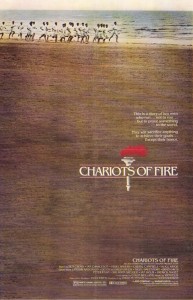 Look at the Oscar-winning Chariots of Fire. Classics like Babette's Feast and, going back farther, Ordet. Look at how many of these films reflect Christianity and are legendary in film history.
Look at the Oscar-winning Chariots of Fire. Classics like Babette's Feast and, going back farther, Ordet. Look at how many of these films reflect Christianity and are legendary in film history.
Look at the not-so-blatantly religious films coming from Pixar, films that celebrate Christian values. Some of Pixar's most prominent directors and writers have publicly professed Christian faith.
I could go on and on, listing examples to the contrary — films made by Christians, and films that reflect visions of Christian faith — that have been praised, even revered, by students of film around the globe, across the decades. Faith-related art that demonstrates true artistry will not be almost unanimously panned by critics.
Imagine what would happen if those pouring their church resources into preachy, low-quality projects were actually to give even 20% of those resources to a world-class filmmaker, writer, or musician.
Almost every time a bunch of Christians decides to produce a "Christian movie" to advance their version of "the gospel," another scenario plays out in my imagination...
Imagine: An evangelist announces "I'm going to make a Christian luxury automobile!" He then patches together a junk-car (usually using pieces stolen from better, actual, um... non-religious cars), calling on the talents of anybody in his small congregation who has ever done any car repair. Somehow, he makes enough noise to get some media attention from car magazines like Motor Trend ranging from scorn to bewilderment (if he gets their attention at all). He interprets these reviews as "persecution," which he welcomes in the name of Christ. Fact is that his car would probably fall apart if put through the tests that are applied to any luxury car in production. But now, playing the martyr, he is inspiring his congregation to rush to his defense, praising what their leaders built as a car that is "glorifying to God" because it has a "Jesus Loves You" bumper-sticker on it. And then the car-review websites are overwhelmed by angry and offended evangelicals who give five-star ratings to his car because they think that this is somehow a way of serving and defending the gospel. Then the car-maker points to those ratings and says, "See the public loves it!" In fact, the only "public" he acknowledges are the crowd of supporters who have fallen for this delusion of "persecution," who believe they are fighting a "culture war."
Meanwhile, most Christians I've met who have grand imaginations and amazing artistic gifts struggle just to feed their families, and spend most of their time doing jobs to pay the bills that take away the time they might spend crafting something that could change the world.
The best lack all necessary resources, while the worst are given millions of dollars to make the disposable, the forgettable, the mediocre... and congratulate themselves for being blessed by God.
And do you know what the scriptures say about confusing money and applause for "God's blessing"?
I'm sure that there will be some in the Left Behind camp eager to post comments telling me that I, too, will be Left Behind for writing such things. Of course, I might welcome such a conclusion. Because if I read my Bible right, the story of Noah's flood, which originated the "left behind" phrase, is saying that it is the wicked who will be taken away by the calamity they have brought upon themselves... and that God will do a great work of restoring the earth for all of those who are... yes... left behind.
(Of course, I also read about a redeemer whose grace is so immense that I would never claim to know the final, eternal situation for any human being. So this whole conversation about determining somebody's salvation based on their opinion of a movie seems dicey to me in the first place.)
REGARDING COMMENTS:
If you wish to comment on this post, send your comment to joverstreet@gmail.com. I reserve the right to publish and respond to any that I find particularly interesting. But it's a very busy time right now, and I will probably not have time to follow up on more than a few.
•
If you appreciate this post and enjoy Jeffrey's work exploring the territory where art, faith, and culture intersect, you're invited to "Put Your Name in the Credits." Cast your vote for "Keep Looking Closer Alive." Make a donation. Offer whatever you feel moved to contribute. All donations will be applied directly to that materials, events, and experiences that make the blog happen. That's a Looking Closer promise.
Listen Closer: Second Impressions of U2's Songs of Innocence
Hey, U2 fans, music lovers, and iPhone users... you're invited! I'm joining Dr. Jeff Keuss and others on Monday night, October 13, for a live podcast conversation called "U2, Apple, and the Future of Music." It'll be at Hale's Ales Brewery and Pub in Seattle's Ballard neighborhood, and the dinner audience will be involved in the conversation, which will eventually be posted online. Want to join the conversation? Get your tickets here.
Okay, let's not waste time talking about distribution methods or the iPhone6. I find all of that to be a huge distraction from the quality and content of the record itself.
Most U2 fans I know want the band to "return" to something. They want the band they heard in 1985, or earlier.
In my experience, great artists don't repeat themselves. They're moving targets.
 On those occasions after Achtung Baby when Bono and the boys have really stuck their necks out — Zooropa, to some extent, but most notably on 1997's Pop — they've been soundly punished by their fans and the press. And they took those beatings too personally. Me, I loved those records. It takes courage to keep exploring new ideas when the crowd that glorifies you just wants more of the same.
On those occasions after Achtung Baby when Bono and the boys have really stuck their necks out — Zooropa, to some extent, but most notably on 1997's Pop — they've been soundly punished by their fans and the press. And they took those beatings too personally. Me, I loved those records. It takes courage to keep exploring new ideas when the crowd that glorifies you just wants more of the same.
That restlessness, that eagerness to shake things up: That's what I've always loved about U2. I haven't heard them make a bad record yet. Each one has been exciting and interesting, meaningful and moving. Sure, some of them have been frustrating, even exasperating. (I've had mixed feelings about the last three studio albums.) But the prevailing sense on every release is a dedication to capturing a cosmic vision of faith, hope, and love in their music — not just their lyrics, but their music. In the world of emotions and responses that music can evoke, they are determined, above all, to evoke joy. And they know that the only way to do that without sentimentality is to reckon with the brokenness, sadness, and darkness of the world. Nope, they still haven't found what they're looking for — they always want to make things new, because they know that the spirit of hope is always in motion and will not be contained by a formula.
So... Songs of Innocence.
No, it won't be remembered as a classic.
It isn't a reinvention of Bono's lyrical style or Edge's guitar stylings. But Bono's voice sounds stronger than it has since All That You Can't Leave Behind, maybe even all the way back to Achtung Baby. And Edge seems to have brought all of his guitars. He refrains from any of his searing, signature solos, and he plays it fairly light in the first half of the record. But then he unloads with moments of big punchy swagger in the second.
They can't seem to break their worst habit: overzealous crowd-stoking. You can hear them directing the audience, setting up the calls and responses. That's when they get predictable. That's when it's clear they're too nostalgic for the big arena experiences of their peak years. I'll have to just go on hoping for more of the brave, experimental U2 records that Achtung Baby, Zooropa, and Pop proved possible.
But I hear something exciting in almost every song here. And I think it has to do with their collaborative spirit. This time, they dumped the producers that were their legendary partners — Daniel Lanois and Brian Eno — and tried out some new chemistry.
For example, they brought in Danger Mouse, the fellow responsible for Gorillaz and Gnarls Barkley and Broken Bells and the Black Keys. And what do you know? This album often sounds like U2 produced by that guy. This record's a little too preoccupied with hooks and simplistic choruses, just like, well, a Broken Bells record or a Black Keys record. But we also get a playfulness and an up-close-and-personal noise, one that never strays too far from the sound of a four-piece band playing live in a resonant room. And where their last three records often sounded blurry and gauzy and mushy, everything sounds here sounds unbelievably crystal clear.
Some quick track-by-track notes:
"The Miracle (of Joey Ramone)": This is a worthy tribute to the inspiring effect of the Ramones' music on Bono... by virtue of being a song that nobody would ever mistake for anybody but U2. It resonates as if Bono took the band's power cord and plugged it back into the very same source of inspiration that first launched them into music history. That isn't to say like they sound like the U2 of '70s; it's just to say that they bring all of the tricks they've learned over the years to a song that positively explodes with youthful energy. While some will think it's just an inspiring nostalgia trip for the boys — a glorification of the spark that first lit the fires in Bono to "sing like a girl" — it is actually a gospel song about the hope of singing together with all of the world's lost voices someday. It's only right that the song would be a big arena-style singalong... even if it does sound as predictable as what an iPhone would produce if it had a program for creating a U2 single.
http://www.youtube.com/watch?v=pEkRy9EX3t8
Watch Bono and the Edge perform an acoustic version of "The Miracle (of Joey Ramone)" here.
"Every Breaking Wave" — A personal confession of trend-chasing, of being tossed about by cultural whims, to increasing dissatisfaction. The chorus is one of the best lyrics Bono's penned in a long, long time:
If you go
If you go your way and I go mine
Are we so
Are we so helpless against the tide?
Baby, every dog on the street
Knows that we’re in love with defeat
Are we ready to be swept off our feet
And stop chasing
Every breaking wave
But the opening strains are unnervingly similar to "With or Without You," and the rapid-fire lyrics and forced rhymes of the bridge nearly shatter the song's hard-won power. They seem a little over-eager to pack every moment with something exciting, when the best U2 material allows the songs to breathe, stretch, and gather strength for truly breathtaking ascent. If they'd ditched that rap-like rush for something instrumental, letting Edge's express what words cannot — or how about giving Larry a spotlight? — the song could have been a great U2 classic.
http://www.youtube.com/watch?v=4Bj3qrMbNig
"California (There Is No End to Love)" — They could've left this nod to the Beach Boys, this remembrance of the band's first visit to California, off of the album and it wouldn't have suffered for it. It's catchy, spirited, fun — it's a sunny, breezy U2 single. But it's the song that makes the first half of the album feel too light and airy — and I'm not just talking about the music. It's almost like they thought, "Well, we've sung about almost everywhere else in America. Where's our California song?" Not necessary.
Having said all of that, the refrain is one that will keep coming back to me:
I’ve seen for myself
There’s no end to grief
That’s how I know
That’s how I know
And why I need to know
That there is no end to love...
"Song for Someone" — I've heard people saying this is one of those U2 songs that may be sung to God or to a lover. Well, it seems pretty clear to me that it's a sweet little shout-out to Ali, Bono's wife. Yes, there's a line about how he's "a long way from your Hill of Calvary." I suspect that's a reference to the home where she has made sacrifices and raised a family. I just can't make "a kiss I stole from your mouth" refer to God, or this: "I was told I’d feel nothing the first time / You were slow to heal but this could be the night." Maybe I'm missing something. Anyway... this is, for me, the most unimaginative song on the record, distinct only for Edge's acoustic-guitar close-up at the beginning. Powerful, sure — but U2 got this kind of powerful down to a formula a long time ago. Walk on, guys. Walk on.
"Iris (Hold Me Close)" — Bono's glowing remembrance of his mother is also entangled in sentiments for his wife Ali, which makes sense since Bono lost his mother at a young age. There's some rare, personal tenderness here in the visual details of his memories: "Iris playing on the strand / She buries the boy beneath the sand..." This plays like the sequel to the song for his father, "Sometimes You Can't Make It On Your Own." He even climbs the same ladder of notes, giving both songs the same operatic peak: "I dream ... where ... you ... are" matches "Can you hear ... me ... when ... I ... sing?" pretty much exactly.
"Volcano" — Adam Clayton gets a big, big spotlight on this one, and there's a quality to Bono's performance that is taking me all the way back to October. Stomping good song. Rolling Stone thinks it's about Bono's dark and angry days after the death of his mother, and it might be. He's sung about that before in "Mofo," where rock-and-roll becomes his surrogate mother; and lo — the song climaxes in an affirmation that "You are not alone / You and I are rock and roll."
But some of these lyrics may well apply to recent days: Let's face it — they've struggled to stay on their feet in a music world that is changing at a bewildering rate. This verse could be about U2 being caught in a tug-of-war between their own glorious past and an uncertain future.
The world is spinning fast tonight
You can hurt yourself tryin to hold on
To what you used to be
I’m so glad the past is all gone...
Been out in the wild
Been out in the night
Been out of your mind
Do you live here or is this a vacation?
"Raised by Wolves" — I like the heavy guitars here, and the personal lyrics. There's a real ache in Bono's voice as he sings the sentiments of a childhood friend whose faith was shaken by a violent encounter: "I don't believe anymore."
"Cedarwood Road" — Another surprisingly heavy rock song about a friend from Bono's past. And this one builds to the album's most glorious height, with Bono roaring, "A heart that is broken is a heart that is open." It's a fiery flourish that the U2 of old would have milked for all that it was worth, bringing in a ferocious guitar solo. But no — they hit that high, and the song ends abruptly. Too abruptly? I'm inclined to think so, and I suspect that they'll carry it even farther live.
"Sleep Like a Baby" — This one didn't stand out on my first few listens, but now I think it may be the best song on the record. It's dark and unsettling, with a nasty edge like nothing I've heard from them since Pop. I wouldn't be surprised to see Bono don the MacPhisto horns when he performs this one in concert. [Update: Okay, more than one U2 fan is affirming my suspicion about the "purple robes" detail — that this song is about a priest in a church that people are fleeing in despair, suggesting we should be troubled indeed that he will "sleep like a baby tonight.")
"This is Where You Can Reach Me Now" — I love the energy, the youthfulness, the hint of 1983's War here. Bono's singing like he feels like a teenager, and perhaps that's because he is one in this song, complaining about the "old man" and rebelling with a vengeance. Rolling Stone's got the scoop on this one: It's about the band being inspired by a 1977 Clash show. But surely the "Soldier, soldier" refrain is meant to remind us of those four young guys of War and their militant approach to political rock music.
"The Troubles" — There they are, the U2 I know and love, trying something new by bringing in a guest vocalist. (When was the last time they did that?)
They chose well with Lykke Li, who sounds like a whispering Wim Wenders angel here, coaxing the singer to a realization that he's allowed himself to become obsessed with other people's problems — maybe his homeland's troubles, or maybe the world's.
The singer seems to be a character who is finally prying his fingers free of causes that preoccupied him, so that he can find his own true self for the first time. For too long, he's lived in denial of his own problems. And what are those problems? Hard to say, but they sound like they were hurting him... physically. Otherwise, why is the culmination of the song's closing prayer about acknowledging that his body is "sacred"?
I love this refrain:
God knows it’s not easy
Taking on the shape of someone else’s pain
God now you can see me
I’m naked and I’m not afraid
My body’s sacred and I’m not ashamed
It's hard to believe that this kind of creativity and energy is still possible from veteran rockers who are now 54-years-old. (Some of the reviews seem to be punishing them for not still be 28-year-olds. Me, I can't believe they sound as youthful as they do.)
I certainly don't expect others to agree. And maybe I'll soon feel differently. But in a month of heavy personal losses and burdens, I am grateful beyond words for the way this album is giving me songs to sing with joy and defiance, at the top of my lungs, as I drive around in the sunshine.
I'm excited by the way they've "progressed" this time; maybe next time they'll move in the mysterious ways that work best for you. It's alright. It's alright. Alright.
Gonna give this one an [81] on the Overst-richter Scale. But I'm tempted to divide the record in two, giving Tracks 1-5 a [75] and Tracks 6-11 an [89].
And here are some write-ups worth reading: Rolling Stone's track-by-track review, The New Yorker on "The Church of U2," and NPR's Ann Powers offers some excellent insights on the State of the Band in "The Dream of Ridiculous Men."
And speaking of ridiculous... did you ever think you'd see U2, Robert Downey Jr., and Graham Norton have a revealing conversation about sunglasses?
http://www.youtube.com/watch?v=9foFAoWUucw
Listen Closer: Thom Yorke, Luluc, Lucinda Williams, Leonard Cohen, My Brightest Diamond, Sinead O'Connor
It's time to check the New Music Seismograph! What albums are shaking the ground beneath my feet?
Those who have followed my blog over the past decade or so know that I'm averse to "rating" art with a point system. (I mean, really... how much can you learn about a record if I tell you "I give it a 72"?)
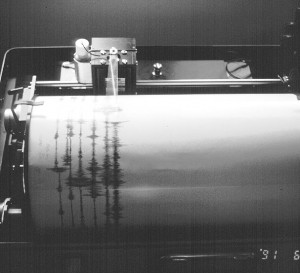 But hey, just to shake things up, I'm going to make an exception. What good is a blog if it doesn't surprise readers from time to time? Introducing the Overst-richter Scale...
But hey, just to shake things up, I'm going to make an exception. What good is a blog if it doesn't surprise readers from time to time? Introducing the Overst-richter Scale...
Keep in mind, though, that stars, thumbs, and point values (in this case, a scale of 1-100) will never communicate what any of us think of a work of art. Numbers can only vaguely represent a sort of Richter Scale measurement of how enthusiastic I am about what I experienced.
What's more — these are early impressions. My opinions on these recordings (I'm still amazed whenever my opinion seems to matter to somebody!) is still in flux. Six months from now, I may feel differently.
Your mileage may vary.
Score approximations:
- 100 = "Glory! Hallelujah! A profound and transformative experience. A contender for my Lifetime Top Ten List."
- 90 = "Fantastic! Scrumtrulescent! Probably on my short list for Album of the Year. Give it to me on CD and vinyl."
- 80 = "One for my home library of favorites. Probably in my Top 10 this year."
- 70 = "Remarkable. Worth a second listen. Likely to land in my Top 25 of the year."
- 60 = "Hmm. Interesting. Maybe I'll try again sometime."
- 50 = "Meh. Mixed Feelings. "
- 40 = "Cons outweigh the pros. Not likely to give it another thought."
- 30 = "It's either boring or off-putting or both."
- 20 = "Ugh. Seriously? Who approved this? Ugh!"
- 10 = "This music is injurious. Listeners may need medical attention for their ears... or their souls."
- 0 = "THE END IS NEAR."
Thom Yorke - Tomorrow's Modern Boxes
Thom Yorke's new album Tomorrow's Modern Boxes arrived all of a sudden last weekend — available for the generous price of $6.00 via BitTorrent. (I was away on a "homework retreat" when the Yorke record arrived, so I'm late with the announcement.)
Why $6.00? Seems like a rather random price. Maybe Yorke decided to play it safe — generous, but not too generous. After all, One of the most beloved bands in the history of music gave away their new album earlier this month, gently tucking it into people's pockets to surprise them, only to have people condemn them for the gesture. So... it's back to the old fashioned method of surprising people with a price tag.
Anyway, distribution methods are a different subject than music itself. Let's talk about the music.
Tomorrow's Modern Boxes is a surprisingly mellow affair, even though it delivers much of what we might expect from Yorke: Yes, it's dreamy. Yes, it's strange. It's layered, haunting, abrasive, itchy and scratchy. Yes, it sounds like a record made in a computer by a musician longing for handmade instruments. It's full of lyrics about existential crises, disconnection, desperation.
It leads Yorke fans in their usual conundrum of finding words to describe these digital atmospherics. One fan review on Metacritic says "Imagine yourself inside a black gyroscope made by grass and looking for a hole to breathe. ... Put your headphones and forget the paradigms." The Drowned in Sound review says "Yorke has always been better on the retreat, and here he retreats beautifully, sinking into a textured netherworld of undulating pulses and ghostly ambience, his voice soft and cherubic or machine distorted into a fine drizzle."
Okay then.
Those looking for the hooks and pop anthems of early Radiohead should know better than to expect such things from Yorke's solo efforts. This is not a record designed for hits. Those who turn up the volume and explore the spacious, surprising, exquisitely detailed music will probably enjoy the tour, and those who listen repeatedly will go on discovering new nuances. The Eraser was abrasive and aggressive, as if Yorke wanted to leave behind the rock band and show us what music sounds like when it's just him... but, you know, it sounded like a more minimalistic, more electronic version of Radiohead. And his most recent band, Atoms for Peace, moved the other way, bringing back big drums and big bass sounds, turning up the energy to frenetic, exhilarating levels. By contrast, Tomorrow's Modern Boxes is the kind of music Yorke would play if he was a massage therapist: drippy, melancholy, the sound of synthesizers sighing and then sleeping and then twitching as the bad dreams begin.
Alas, I haven't been able to track down a document with the official lyrics. Points go to U2 there: Bono and the boys supplied a handsome PDF full of notes, lyrics, and credits with their no-cost Songs of Innocence album. Lyrics are tremendously important to me in my experience of an album, and Yorke's voice is so subtle an instrument that I often cannot decipher what he's saying. He leans on lines like "Why have you forsaken me?" and "All my life is sin, sin, sin," making me particularly eager to find out what's going on here.
I find much to admire about PopMatters' thorough tour of the record.
Let's call this a [72] on the Overst-richter Scale.
•
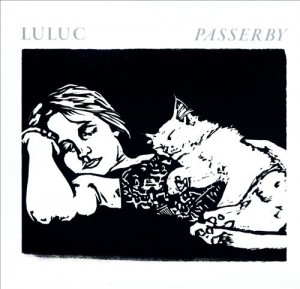 Luluc - Passerby
Luluc - Passerby
For me, it's the second or third — or tenth — listen to an album that sometimes wins me over. On Sunday, driving in the Sunday morning sunshine with Anne, listening to Luluc's Passerby, I suddenly fell madly in love with this record.
This seems to be quiet music. Turn it up. Turn it up loud. This is an album that should be played at high volume so you can hear all of the wonderful textures and details. A beautiful, cohesive, poetic record that fans of Over the Rhine's Drunkard's Prayer and The Innocence Mission's Birds of My Neighborhood should really appreciate.
That Sunday experience made me look around to see what the reviews have been like. I agree with Timothy Monger's praise at AllMusic:
These are quiet, timeless songs that show a healthy restraint yet exude a true sentimentality that is so often lacking in modern indie folk music. There are many rich layers expressing fondness, regret, wonder, and gentle heartache as viewed by two travelers watching life unfold halfway across the world from their adopted American cityscape. From the thoughtful reflections of the title cut to the sad tenderness of "Tangled Heart," the themes are relatable and void of trendiness. Luluc's attention to detail and careful songcraft are apparent yet the music slides comfortably by, revealing its true depth with repeated listens. The six years between their debut and Passerby were obviously well spent, and if it takes Randell and Hassett another six to write more material of this caliber, then we should be grateful for their patience.
Here's the exquisite opening track:
https://www.youtube.com/watch?v=wl4WOY15_nA
I'd say more, but my friend Jo Vance wrote this excellent one-paragraph review for Image Update. So, with her permission, I'm reposting it:
Made up of native Australians Zoe Randell and Steve Hassett, the folk duo Luluc has created a triumph in their new album Passerby. Luluc’s music demands a rare attention, so be forewarned: Passerby will stop you. Let yourself be stopped. A curious tenderness glimmers under the melodies of these songs, and their sadness is their tenacious strength. “(And) for all I long, / for far more I rejoice,” sings Randell in the opening track, “Small Window.” Though this is an album about longing and “this passerby life,” it doesn’t despair. The album’s searching melodies pair with lyrics of quiet sincerity, which never once become cloying or cynical. A superlative track with its thrumming guitar and clear-cold melody, “Winter Is Passing” wonders at separation, and what is to come, letting the song hang in the question: “And when I return again / how will you be?” Wandering and return figure strongly in this record, making appearances in songs that look back at past places and relationships out of a desire to sew meaning together, to understand. The song “Senja” asks, and asks again, in a haunting refrain: “Where does this longing come from? / Or is it just how it runs?” The meaning comes in the slightest shifts, the wrinkles between here and there. The ending song, “Star,” pauses midway and changes tempo–just wait for it–as these last words are sung, every passerby’s manifesto: “I search but I’m not lost / I cry but it’s not wrong / And I can see so much / much more than before.” The song opens wide in this moment, into a gentle, echoing harmony. We are blessed by the clarity, and the strong, sure voices that reveal it.
Let's give this one an [84].
•
Lucinda Williams — Down Where the Spirit Meets the Bone
A double-album without an ounce of fat on it.
Every track is solid, Wiliams' vocals are darker and stranger and more evocative than ever, and her lyrics are a cohesive collection of straightforward meditations on compassion, empathy, hardship, regret, and love. Not her most poetic writing, but it may well be her finest hour as a performer with a band.
https://www.youtube.com/watch?v=B5GvAjqaHbQ
This one also gets an [84].
•
Leonard Cohen — Popular Problems
No disrespect to the 80-year-old master lyricist, but it's been a while since Cohen released an album in which the music didn't sound like an afterthought. By my lights, this is easily his most interesting collection of songs since Ten New Songs. And thank God he invited a producer who cares about instrumentation along for the ride. What's more, he seems to be taking more and more inspiration from Tom Waits and Bob Dylan for his vocal performance — he really growls and snarls and rasps his way through this one. I like it. I like it a lot. Especially this:
https://www.youtube.com/watch?v=m8tKk48QUns
[86]
•
My Brightest Diamond — This is My Hand , and her earlier EP None More Than You
Expect a more thorough review sometime later this year. But for now, I'll say this: I've been waiting for the My Brightest Diamond records that move me from admirer to Big Time Fan. These two releases have done it.
https://www.youtube.com/watch?v=CePpTXIuQzY
This is My Hand — [88]
None More Than You — [78]
•
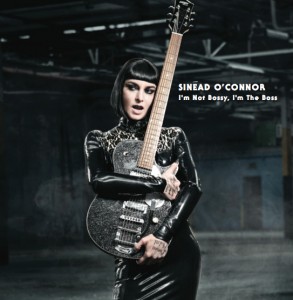 Sinead O'Connor — I'm Not Bossy, I'm the Boss
Sinead O'Connor — I'm Not Bossy, I'm the Boss
This record feels like a forceful effort from O'Connor to regain the stature of Ferocious Rock Star that she once had.
And she's much more successful than I would ever have expected. It's been a long time since "Fire on Babylon," that blast of rage and hellfire that opened up Universal Mother (which remains my favorite O'Connor album). But here she is, with a loud, guitar-heavy record that delivers some truly sensational rockers.
"Take Me to Church" is a gutsy anthem, but "Harbour" is the big event. It starts strong and then at the 2:36, watch out: That's the howling fury that scorched the earth when The Lion and the Cobra was first released? She's back.
She can still bring the crazy: In the first half of the record she seems strangely compelled to strut her way up the steps into some kind of late-80s-Madonna, brazen-sex-goddess kind of spotlight. There's a song about how frightened she is when the eyes of a man she's having sex with suddenly turn black. (I am not making that up.) And what would an O'Connor album be without some laughably egomaniacal announcements?
Is it overproduced? Yes. And she may be trying to conceal the fact that her voice isn't quite what it used to be, because some of these performances are excessively multi-tracked. But the pros far outweigh the cons here.
This is a hugely surprising record, and one that I admit I enjoy just about as much as the far more widely discussed record I'm going to take on next...
https://www.youtube.com/watch?v=jMzY_KQIKjU
First impression score: [77].
Left Behind (2014): A Looking Closer Film Forum
[This post will be updated over the next few days, so check back as this thrilling — dare I say rapturous? — cinematic occasion unfolds!]
Yesterday, I received an advertisement distributed by Christianity Today in which Tim LaHaye said this about the new Left Behind movie:
"You will be moved, blessed and thrilled."
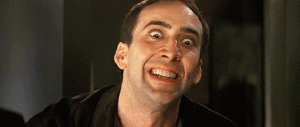 Yeah, I remember how, when I was six years old, I wrote a story, stapled it together, and then, to make it look like a real book, I put my own rave-review blurb on the cover, praising my own story. Because that made it real. And who better to describe the greatness of a story than the guy who wrote it?
Yeah, I remember how, when I was six years old, I wrote a story, stapled it together, and then, to make it look like a real book, I put my own rave-review blurb on the cover, praising my own story. Because that made it real. And who better to describe the greatness of a story than the guy who wrote it?
Then I grew up and put away childish things.
But anyway, that's a tangent.
Here's the real story...
After Christianity Today sent everybody that advertisement, they then published their own review of the film, composed by Jackson Cuidon, a moviegoer who has proven time and time again that he is thoughtful and discerning in his film reviewing and in his consideration of how faith and art intersect.
And what does he say?
Left Behind is not a Christian Movie, whatever “Christian Movie”could even possibly mean.
... [M]ost Christians within the world of the movie—whether the street-preacher lady at the airport or Rayford Steele’s wife—are portrayed as insistent, crazy, delusional, or at the very least just really annoying. Steele’s wife’s conversion to Christianity is shown to have pushed her and her husband apart; we see that she’s decorated her house with crosses, throw-pillows that say “Pray” across the front, and encouraging posters.
That is the deepest conception of Christianity that this movie has: posters, pillows, and crucifixes.
If the Left Behind books were just pulp novels injected with Christianity, then the Left Behind movie is just a disaster flick injected with the slightest, most infinitesimal amount of Christianity possible. This is, in one way, good—no one needs to be upset, or get angry, or be offended, or question their beliefs, or the beliefs of those around them, or anything, because the film takes no stance on anything. The film is so inept, confused, and involuted that there’s no danger of even accidentally cobbling together something that could necessitate a defense of Christianity.
On a four-star scale, Christianity Today gives Left Behind... are you ready?
Half a star.
Half of one star. That's, like, 12.5 points on a 100-point scale. On a report card, well... you get the picture.
How about a second opinion?
Let's go to Crosswalk, where Christian Hamaker writes:
... this Left Behind is not a good movie — Christian or otherwise. ... [R]ather than a timely, relevant story, this Left Behind plays like a throwback to the 1970s, when disaster movies were all the rage. It's mainly an airplane-in-peril drama rather than a thoughtful treatment of the story's theological underpinnings.
...
[T]he film is, for a while, tolerable. Then comes a horrendous final 30 minutes, which play like a bad TV show. Theological quandaries, never given detailed exploration amid the confusion experienced by the passengers on Ray's plane, yield to stock disaster-movie tropes and an absurd finale.
Paul Asay of Focus on the Family's PluggedIn says:
Whatever grade you give Cloud Ten in execution, they get an A for effort. ... If all good Christians in the world suddenly vanished in a blink of an eye — just like they always claimed they would — it seems that once you figured out they weren’t hiding under the table, some serious spiritual soul-searching would be in order. If you’re making a story about the Rapture, things get a little churchy. ... Left Behind may not be a high water mark for Christian cinema. And yet, it has some of the same charm that Christianity itself has.
Huh.
That seems to stand in direct contradiction to Brett McCracken at Christianity Today who reminds us,
The Rapture is a relatively recent idea in church history, as well as a minor theme in Scripture: Many Bible scholars argue that it's not there at all...
But we'd like to believe that these stories are not preaching to the choir... that they're spreading the gospel to unbelievers. Right?
Let's see what the film experts beyond the world of Christian publishing are saying...
Jeannette Catsoulis at The New York Times calls it "breathtakingly clunky."
Over at The Dissolve, Nathan Rabin says:
As a standalone film, Left Behind makes little sense. It doesn’t even make much sense as the opening of a trilogy, but as part of an elaborate, extensive mythology, it’s less jarringly inadequate. Sure enough, Thomson and Murray have already signed on for sequels, but the film’s appeal is largely dependent on Cage; Left Behind is a batshit-crazy Cage cult classic of a radically new stripe. Without him, Left Behind would certainly not be been the funniest movie set onboard an airplane since Airplane!, though it’s funny in a slightly different way.
Elizabeth Weitzman at The New York Daily News says:
This failed epic — really, an epic failure — would barely be noticed, were it not for former Oscar-winner Nicolas Cage taking on a Sharknado-quality remake of a Kirk Cameron movie.
Matt Pais at RedEye Chicago says:
This movie is the worst. And the best. I haven’t laughed like that in a theater in a long, long time, and not one of those laughs was earned on purpose....I love the way Cage throws out items as he rifles through the bag of a flight attendant who disappeared (she went to Bible study and wasn’t a hussy). I love the one and only family photo into which it looks like Cage was Photoshopped. I love that all Buck eventually is good for is pressing “redial,” and the suggestion that a plane can’t land unless a port-a-potty is out of the way. I love that there’s no societal context to address why the rapture’s happening now and that Chloe, no joke, does something that reminded me of both “Wet Hot American Summer” and “The Great Muppet Caper.” Really, I cannot believe this movie exists, but I’m so glad it does.
Bilge Ebiri at Vulture:
...it’s the shoddy execution that kills Left Behind. All the nutter-butter end times stuff might have been tolerable if the film could string together a few scenes that weren’t laughably written and directed. . . . Left Behind is a complete botch. As for Nicolas Cage, he mostly seems annoyed. At times, this fits the part: As a pilot, he has to keep his cool, even as people keep pestering him for answers. At times, it fits the part in more meta ways: He may be wondering if all those ex-wives and fancy houses were worth a headline role in what will surely go down in movie history as one of the worst – not to mention craziest – movies ever made.
Christy Lemire at RogerEbert.com says:
Looking distractingly rubbery with a helmet of fake, dark hair, [Nicolas Cage] seems to have been Photoshopped into the film.
. . .
“Left Behind” finally edges toward an enjoyable level of insanity as it reaches its conclusion. I wouldn’t dream of giving away the details–mysterious ways, and all–but I will say that it involves the petite Chloe driving a steamroller in the dead of night on a deserted stretch of highway that’s under construction.
Salt Lake City's Scott Renshaw comments at Letterboxd:
. . . it’s so ineptly put together — from the leaden performances to the ragged editing to the hilariously random behavior of the extras during the scenes of “mass hysteria” — that it leaves you with nothing but what should be an obvious question: If the story’s eschatology insists that its world is now doomed, why should we be rooting for our heroes to survive?
And... best of all... look who rose from the dead, driven by a sense of responsibility to warn us about this film!
The Christian Message of David Fincher's Gone Girl . . . (Not Really)
It happens all the time. I get an email from an angry reader who says, "Why are you wasting time talking about the technical aspects of a movie? What really matters is the message!"
From now on, when that happens I'll probably encourage the disgruntled reader to read an article called "Lazy Cultural Engagement," which was published today at Christianity Today.
One of my favorite writers on the subject of art, faith, and culture — Alissa Wilkinson — has seen Gone Girl, the new film by David Fincher.
 I know a lot of Christians who will ask, "Why did she give any attention to Gone Girl? It's dark. It's violent. It's R-rated. And there's nothing Christian about that movie!"
I know a lot of Christians who will ask, "Why did she give any attention to Gone Girl? It's dark. It's violent. It's R-rated. And there's nothing Christian about that movie!"
I know others who are likely to hear from their pastor, or read on a "progressive" Christian website, that Fincher's film is about "the wages of sin," or it's about "Christian themes," or it's about "what happens to marriages when husbands and wives don't know Jesus" ... and they'll decide it's worth a look.
For what it's worth, I've been both of those people at different points in my journey of faith. And in both cases, I was looking at art through glasses that distorted my vision and prevented me from having a rich, meaningful experience.
That's because there is a distressing delusion at the heart of so much Christian engagement with art: It's the delusion that says "The style and the substance are two different things. We should care much, much more about substance than we do about style."
Here's the thing: Style is substance.
Look out the nearest window at a tree, or at the clouds, or at anything God has made. By focusing on how God made that thing — by discussing the "stuff" of it, the particularity of the details, the beauty, the shapes and colors and chemistry — you can come up with all kinds of provocative, revelatory observations. If you change the style of something, you change what it can mean. And what's more, God's creation speaks to us in new ways all the time.
When Jesus shared parables, he didn't "deliver messages." Not even close. He gave us mysterious narratives that we continue to ponder, discuss, and interpret, with new rewards and understanding, many centuries later. When we call something "a work of art," we are praising it as something that is suggestive, not declarative. We're claiming that it speaks mysteriously, not directly but at a "slant" (to borrow a word from Emily Dickinson). What's more, we're claiming that it will go speaking in ways that cannot be reduced to paraphrase. And it will very likely speak differently to different viewers based on their experience, their attention, their questions.
When Jesus wanted us to remember him, he didn't give us a piece of bread and a glass of wine and say, "Let me explain to you what these represent. Let me tell you the message of what I'm doing." No. He just said, "Take. Eat. Drink. This is my body. This is my blood." And we are still pondering what he meant. We are still discussing it. In some cases, we are still arguing about it so vehemently that we're building walls to separate ourselves from people with other interpretations.
Thus, a work of art is something with which you can have a relationship; it is not a puzzle that is solved by the discovery of what it means.
How ironic, then, that much of what passes for "Christian art" in recent decades is, in fact, simplistic, didactic, a message wrapped in mediocrity. Clunky narratives. Obvious poems. Cliche-heavy lyrics sung to derivative music.
A fuller understanding of art can bring us to two complementary perspectives:
- The first recognizes that all meaningful art is "Christian" in the sense that art, by virtue of inviting us into beauty and meaning, is reflecting something of God's glory and something of human limitations.
- The second way of understanding the same thing would be to say that "There is no such thing as Christian art." That's because Christians do not have a monopoly on what is true: Non-Christians can see and reflect aspects of the truth in their art as readily as any Christian, and art made by Christians is sure to be fractured by blindness and corruption because Christians are human beings too.
If art reflects the truth, then it reflects Christ. Because Christ is the truth. Sometimes, people get to know him before they discover who he is. I think he likes it that way.
When artists create meaningful art, we'll know it, because it will be more than just "true." It will be beautiful. It will be mysterious. It will go on revealing new nuances, new provocations, new revelations on the third, the seventh, and the seventeenth encounter. Whenever you encounter that confluence of truth, beauty, and mystery, you are encountering Christ at work. He often moves unrecognized. He often pockets his name tag. (Remember that road to Emmaus?)
What were we talking about? Oh, yeah... Gone Girl.
Let's get back to Alissa Wilkinson.
Alissa went and saw Gone Girl. She took notes so that she could write a review for Christianity Today. Some readers will be eager to know what she thinks about the film's "message." And they will be disappointed if she spends time talking about the film's style. They'll think that she's wasting her time on frivolous matters.
But that is not the case.
As she says:
Christians, of all people — people who still believe they’re embedded in a cosmic story, one with both form and content — ought to be the ones who get why we focus on how a comedy works, or what’s going on in the background of a shot, or why a filmmaker might be drawing on the past, or whatever. If we think art is designed to work both on the level of form and content, then we can’t possibly be satisfied to get the “message,” evaluate it, accept or reject it, and move on.
We should be hungry for more.
Can I get an "Amen!"?
•
